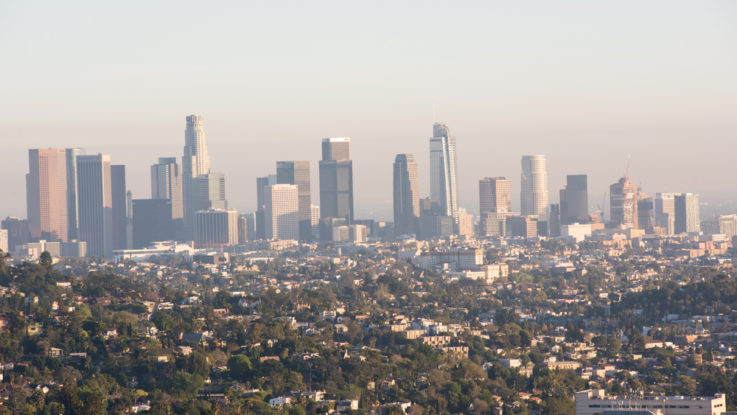
A new study led by UCLA has shown that residents of greater Los Angeles with the most socioeconomic disadvantages also face higher levels of toxic air pollution. The research is the first U.S. study to measure air pollution toxicity against people’s socioeconomic conditions.
The researcher team collected air samples from 54 locations over two-week periods in September 2019 and February 2020. The samples were collected from four types of locations: near major roadways; in urban communities; in locations away from dense urban development; and in desert locations in the San Bernardino Valley.
The samples were then analyzed to determine how much PM 2.5 pollution was present, and its toxicity. (PM 2.5 refers to particles smaller than 2.5 microns, which can penetrate deep into lungs.)
The results showed that air from census tracts in the 25% of communities facing the most socioeconomic disadvantages contained a greater amount of pollution, and that the pollution in those areas was more toxic. The measurements indicated that 42% of total toxicity came from tailpipe emissions and 21% from brake or tire wear, 20% from soil dust, and 17% from various other sources, such as industrial sites and ports. The types of pollutants measured in the study significantly correlate with medical conditions, such as respiratory, cardiovascular and metabolic illnesses, as well as with low birth weight and other pregnancy-related issues.
“Overall, people living in these places experience about 65% higher toxicity than people in the most advantaged group,” said Suzanne Paulson, the senior author of the study and professor of atmospheric and oceanic sciences at UCLA.
Future studies will focus on related health issues and other public health challenges.
“Disadvantaged areas can face a situation where the environment is worse, and there is also less access to health care and good nutrition, increasing their health risks,” Jiaqi Shen, the study’s lead author said.